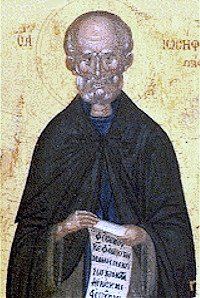Introduction


A native of Sicily, Joseph left that island in 830 for a monastic life in Thessalonica. From there he went to Constantinople (now Istanbul, Türkiye), but left there during the iconoclastic persecution, going to Rome.
He was for many years a slave in Crete, having been captured by pirates. After regaining his freedom, he returned to Constantinople.
He established a monastery there, in connection with the church of St. John Chrysostom, which his eloquence filled with inmates.
He was banished to the Chersonese for defending icons, but Empress Theodora recalled him. Through the favor of the patriarch Ignatius, he became Sceuophylax (keeper of the sacred vessels) in the Great Church of Constantinople.
Joseph also stood high in the favor of Photius, the rival and successor of Ignatius, and accompanied Photius into banishment.
Joseph died at an advanced age in 883, and was the most voluminous of the Greek hymn writers. There are more than two hundred titles under his acrostic, Menaea, and he may have written as many as a thousand total.
It is often difficult to distinguish his work from Joseph of Thessalonica, sometimes called Joseph of the Studium.
The Greek church calendar commemorates Joseph on April 3.